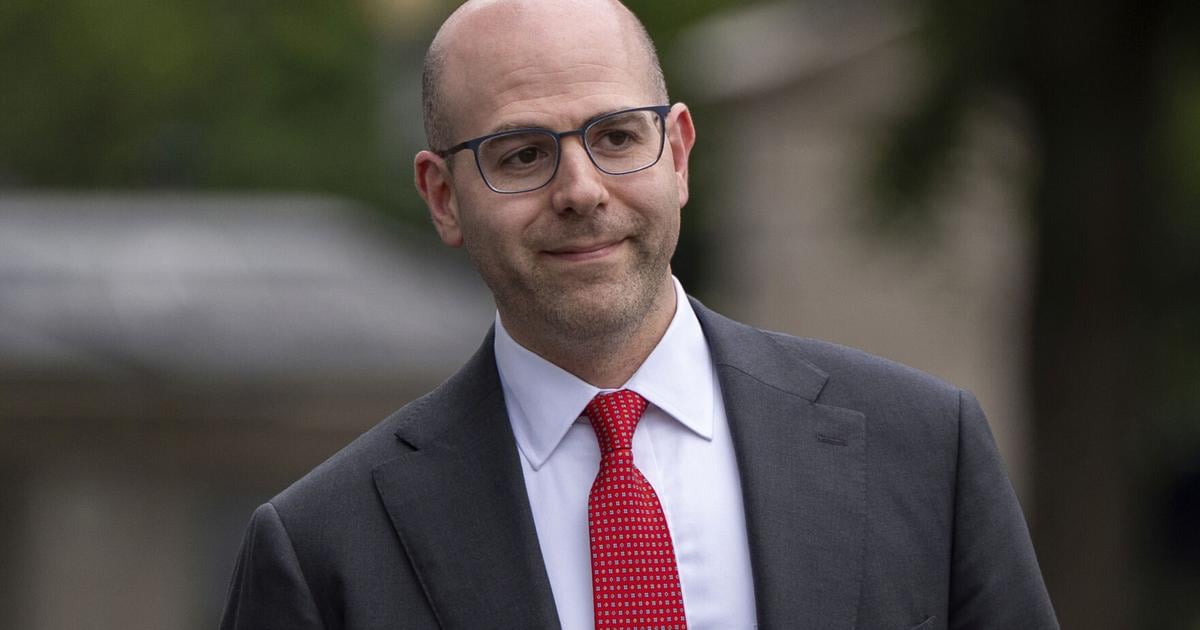WASHINGTON — President Donald Trump’s appointee to the Federal Reserve’s Board of Governors, Stephen Miran, stated Monday that the central bank’s key interest rate should be significantly lower than the current 4.1% level, marking a position that differs sharply from his colleagues.
Speaking to the Economic Club of New York, Miran, who is also a top economic adviser to Trump, cited factors such as sharp declines in immigration, rising tariff revenue, and an aging population as reasons the Fed’s rate should be closer to 2.5%. This figure is nearly a full percentage point lower than any of his 18 colleagues on the Fed’s rate-setting committee, reflecting an unusually wide divergence.
Miran’s remarks highlight the unique perspective he brings to the Fed’s interest rate policy deliberations. His appointment has sparked controversy because he has retained his position as head of the White House’s Council of Economic Advisers while taking unpaid leave from that role, raising concerns about the Fed’s customary independence from day-to-day politics.
His term on the Fed’s board expires in January, and Miran has indicated he expects to return to the White House afterward, maintaining his Fed seat because of the short length of his term. However, he could remain on the board until a successor is appointed. It is noteworthy that there has not been a member of the executive branch on the Fed’s board since the 1930s.
Concerns over the Fed’s independence have intensified amid President Trump’s repeated criticisms of Chair Jerome Powell and demands for the Fed to reduce its rate to as low as 1.2%. Recently, Trump has sought to fire Lisa Cook, a Fed governor who has resisted her removal through legal action. This marks the first time a president has attempted to fire a Fed governor. Courts so far have ruled that Cook can stay in her position while her lawsuit seeking to overturn her firing is ongoing. The Trump administration has appealed this ruling to the Supreme Court.
During a question-and-answer session on Monday, Miran emphasized his independence, stating that Trump has not pressured him to adopt any specific policy. “At the end of the day, I make my own analysis based on my own understanding of economics and how the economy works,” Miran said. He added that in his conversations with Trump, the president “never asked me to set policy in a specific way.”
In his speech, Miran affirmed, “It should be clear that my view of appropriate monetary policy diverges from those of other members of the committee.” He described current policy as “very restrictive,” suggesting it is holding back the economy and “poses material risks” to the Fed’s congressional mandate to seek maximum employment.
Regarding inflation, Miran argued that fewer immigrants should free up more housing, lowering rental costs and thereby reducing inflationary pressures. He also pointed to tariff revenues—estimated by the Congressional Budget Office to potentially top $300 billion annually—as a factor that should help reduce the federal deficit. Over time, he suggested, these elements mean the Fed might not need to keep its benchmark interest rate as high as it currently is to bring inflation down.
However, many economists hold an opposing view on the impact of reduced immigration. They contend that fewer workers lead to labor shortages, prompting businesses to raise wages to attract staff. While this benefits workers, companies may increase prices to compensate for higher labor costs, potentially worsening inflation.
Miran also proposed that the Fed consider alternatives to its current 2% inflation target, which would represent a significant policy shift. Yet, he emphasized that any changes should only be considered after the Fed first achieves a 2% inflation rate. According to the Fed’s preferred measure, prices excluding food and energy increased by 2.9% in July compared to a year earlier.
“If you look before 2012, the Fed didn’t have a formal target at all,” Miran noted. “They pursued low and stable prices. To me, that’s an interesting way of doing things also.” He added that reconsidering the target “should only ever be entertained … after the Fed has successfully achieved its target for a sustained period, to ensure there’s no appearance whatsoever of moving the goalposts.”
Meanwhile, other Fed officials speaking on Monday expressed much greater caution about future rate cuts, underscoring the divisions among policymakers as they confront an unusual economic environment characterized by a nearly stalled hiring rate despite persistent inflation.
Last week, the Fed reduced its key interest rate by a quarter percentage point—the first cut this year. Chair Jerome Powell described the move as a “risk-management” step designed to shield the job market from further weakening, implying that the Fed’s rate cuts are more measured than they would be if a recession were imminent.
When the Fed lowers its rate, it often leads to decreases in longer-term borrowing costs—such as mortgages, car loans, and credit cards—which can boost borrowing, spending, and economic growth. Alongside the rate cut, the Fed’s 19-member rate-setting committee projected further cuts: two more this year and one in 2026, still far less aggressive than Miran’s preferred pace.
Alberto Musalem, president of the Federal Reserve Bank of St. Louis, said Monday there is “limited room” to cut rates before reaching a point that overly stimulates the economy and accelerates inflation. “We should tread cautiously,” he said, recommending that interest rates remain sufficiently high to push inflation back to target.
—
Stay informed and connected — subscribe to The Philadelphia Tribune NOW!
[Click Here]
—
*Note: Please keep discussions respectful and free from obscene, vulgar, racist, or sexually-oriented language. Threats or falsehoods will not be tolerated. Use the ‘Report’ link to notify moderators of any abusive content.*
—
**Community Insight:** Has job hunting as a Black Gen Zer come with more halts and frustration than expected? You’re not alone. Unemployment rates for Black/African American youth in Philadelphia remain higher than other racial and age groups. Share your experiences and help us tell the full story.
https://www.phillytrib.com/trumps-federal-reserve-appointee-seeks-steeper-rate-cuts/article_55628ac4-c7cb-451d-8207-475e6de29217.html
